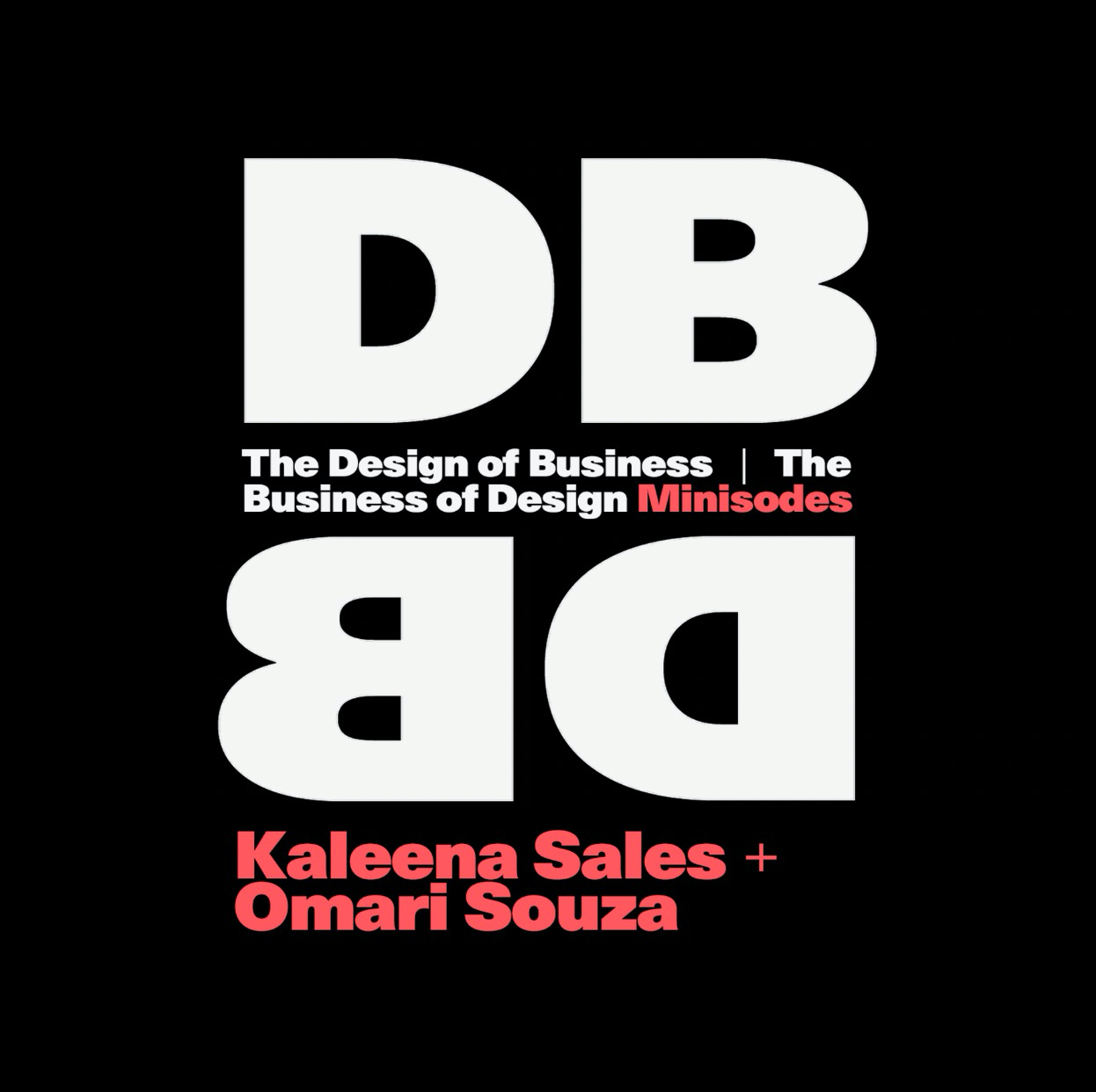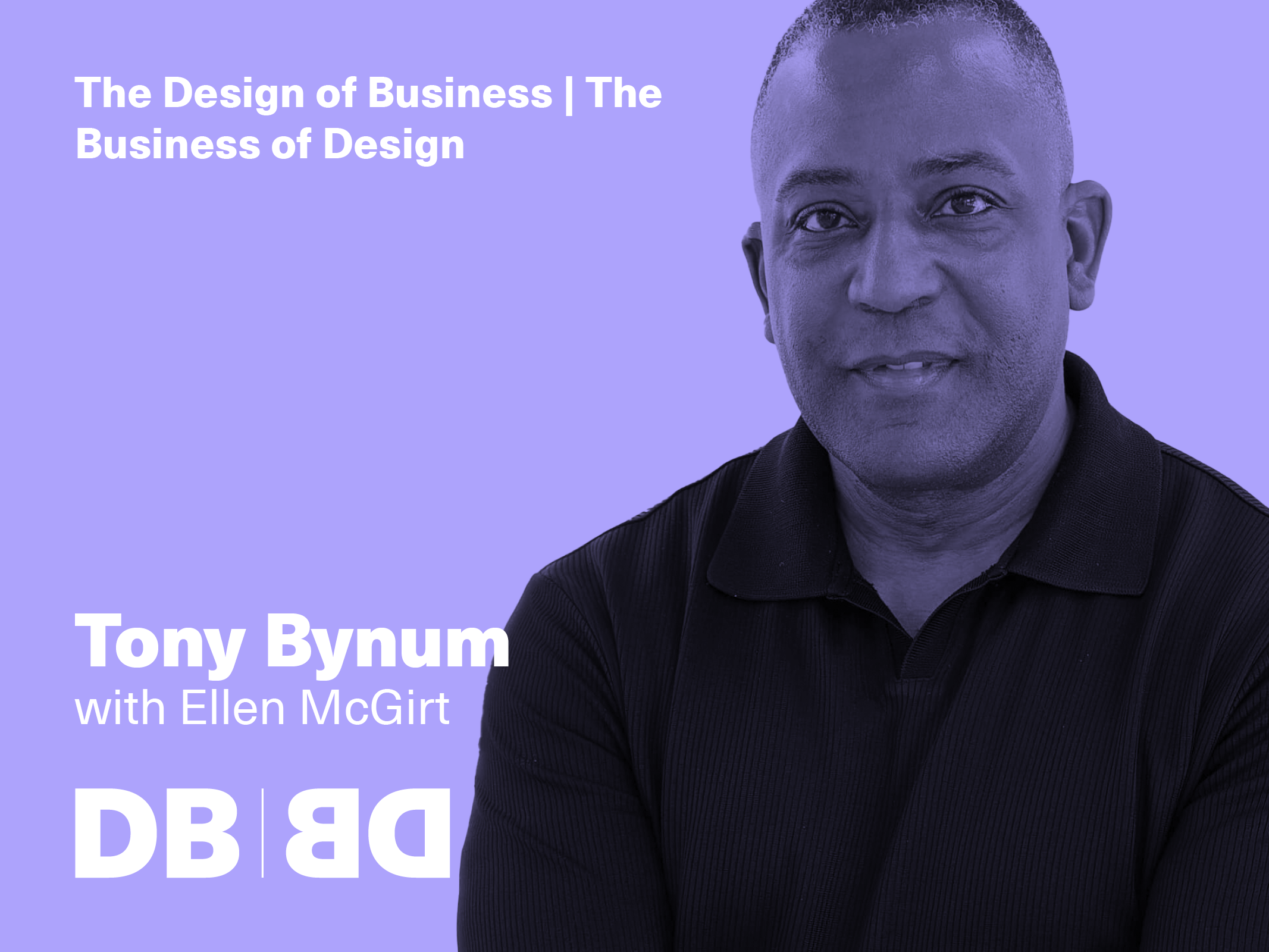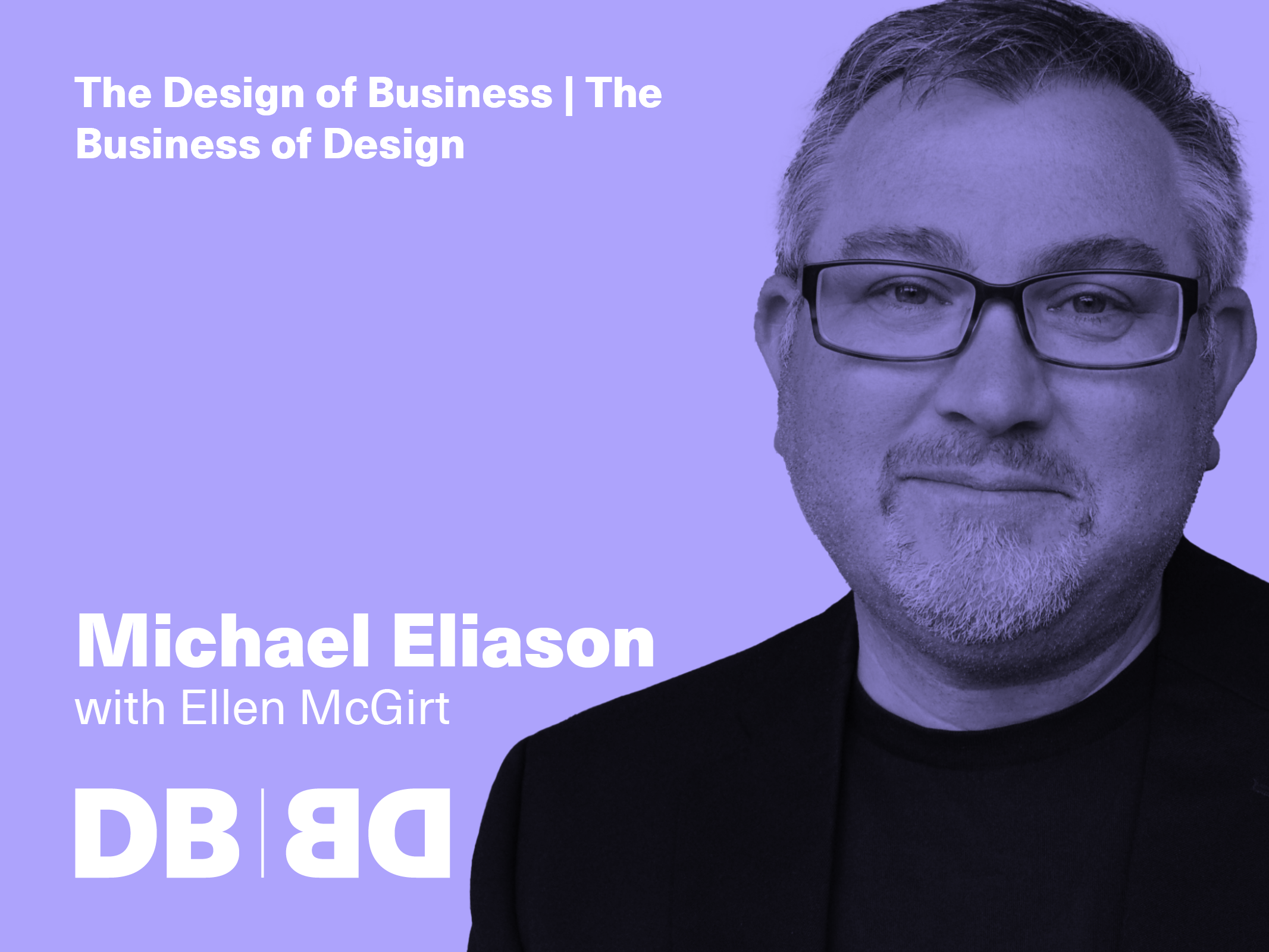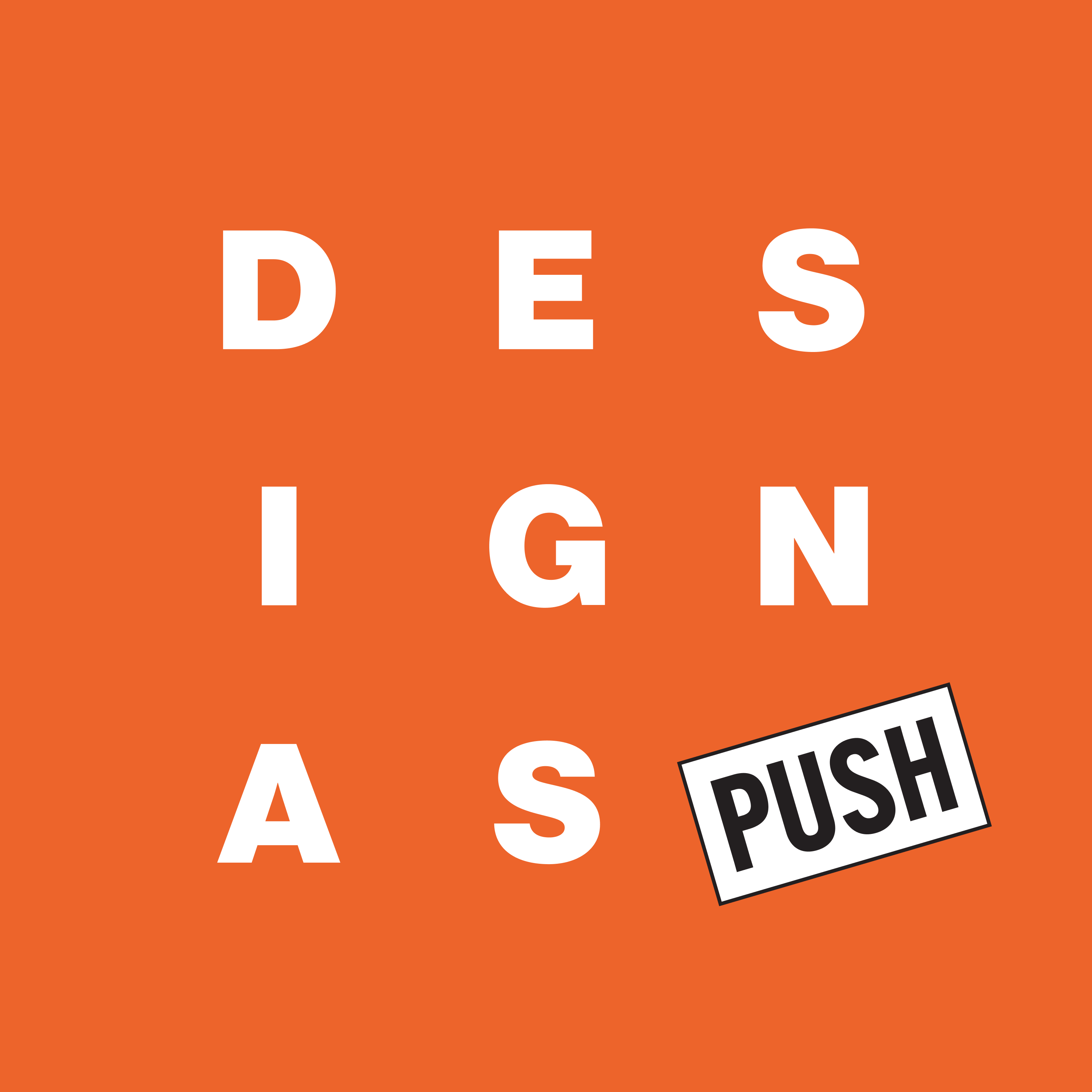
Kaleena Sales, Omari Souza|Audio
December 31, 2009
S10E5.5: Minisode
In this month’s minisode Kaleena and Omari take a listen to past episodes with Perrin Drumm and Annie Atkins.
Both Perrin and Annie had identified points in their career paths when they realized there was a different model of design to follow, breaking from classic traditions and voices. Omari discussed how he tries to bring those realizations to his students:
I often tell my students all the time that as a professor, it’s not my responsibility to get you to design like me and or think like me, but it is my responsibility to coach you in your own pursuits and to challenge what that pursuit looks like, so that you can develop something of your own. Because the industry only grows if you embrace the uniqueness that is you, and not necessarily attempts to replicate what your professor does. Because if I’m just trying to duplicate myself, I’m really just indoctrinating and I’m not teaching anybody anything…
Kaleena agreed, and spoke to the possible risks when design education fails to incorporate that philosophy:
What we tell students that they have to be or what it means to be a designer, an art director, or whatever it is that they’re doing and then how their work does or doesn’t perform in those standards, either give them the confidence to go forward with it or not. And I think we lose a lot of students who are not from or accustomed to those design standards or who are not interested in those design standards. A lot of people from marginalized communities or just people who are just a bit more rebellious in their esthetic, we lose them, because we’re not showing them value and we’re not encouraging them to develop more of that self-expression.
This episode of The Design of Business | The Business of Design is brought to you by Morningstar: investment research, data, and strategies to empower long-term investor success.
Follow The Design of Business | The Business of Design on Apple Podcasts or your favorite podcast app.
Sign up for our newsletter to keep up with everything going on at Design Observer.
TRANSCRIPT
Omari Souza
Welcome to The Design of Business,
Kaleena Sales
The Business of Design, minisodes. I’m Kaleena Sales.
Omari Souza
And I’m Omari Sousa.
Omari Souza
Kaleena! How’s it been? It’s been a minute since we’ve done this and have talked and hung out for the public to see and hear us.
Kaleena Sales
Yeah, I know. It feels like it was forever ago, but I guess it was just, what, a few weeks ago? The school year has officially begun. And yeah, we’re we’re in week five of our semester. How far along are you guys?
Omari Souza
I’m in week four, but I’m actually kind of processing everything in terms of catastrophes. So we’ve gone from COVID to monkeypox,
Kaleena Sales
Oh yeah.
Omari Souza
To whatever else, and now things finally feel like they’re calming down on the world.
Kaleena Sales
Yeah.
Omari Souza
How’s your semester been so far?
Kaleena Sales
It’s been really good so far. The students are really eager. We have a really large incoming freshman class here at TSU. I think there’s been a renewed interest in HBCUs, so that’s really exciting. And yeah, we’re off to a really good start.
Omari Souza
Amazing. I know. I am definitely looking forward to joining you guys for homecoming in a couple of days.
Kaleena Sales
Yeah.
Omari Souza
A little bit under two weeks, so.
Kaleena Sales
Oh, my gosh. It’s it’s going to be pretty exciting. Yeah. I’m excited to host you.
Omari Souza
But to kick off the second half of season ten of The Design of Business | The Business of Design, Kevin and Dana spoke with Perrin Drumm head of publishing at A24 and graphics props designer Annie Atkins.
Kaleena Sales
Both Perrin and Annie spoke about the work they did to try to find their space in the design world. For Perrin, founding AIGA’s Eye on Design was a new kind of design journalism.
Perrin Drumm
We all love Massimo Vignali and we all bow down to him. But there had been enough written about that. And what about, you know, what’s going to speak to the 25 year old kid who’s living in a small town or a different country outside of, you know, Western Europe and white America? Like, who are their heroes? Let’s let’s meet them.
Omari Souza
And Annie also spoke about her first venture into the professional design world and how that didn’t go as planned.
Annie Atkins
I was not good at advertising design, especially in a Nordic country. I mean, the style was very, very beautiful, very sparse, very minimal, a lot of beautiful, muted tones, beautiful digital typography, perfect kerning, a lot of white space. And, you know, it’s just not me. I think after a while I learned to imitate it quite well. But I’m just I’m naturally quite a-I’m a little bit of a messy designer, maybe at times in a way, and there was no room for that kind of messy, tactile feel back then. So yeah, I just I just I never felt like I was really very good at it. And I think for that reason I didn’t really enjoy it. And I’m not sure. I’m not sure what you know. Can you enjoy something that you’re not good at? Can you be good at something you don’t enjoy? I don’t know.
Kaleena Sales
Both Perrin and Annie, I thought, were making really interesting points. For me, I heard kind of two different things that I was really interested in talking to you about Omari. One was the concept of like the designer who takes the divergent path. And so, you know, our responsibility is, even as educators in preparing students to kind of carve out a path on their own. I was really starting to think about that a little bit. And then the other part of the conversation that I thought was really, really interesting, Annie was talking about the industry and sort of not feeling like individualistic expression was welcomed and that there wasn’t really a space for that. And how that made her career in that space not enjoyable, or at least she felt like she wasn’t good at it because-because she wasn’t able to do or willing maybe even to do, you know, sort of the traditional esthetic of the time. And so those are kind of a couple of different points that I wanted to talk about. What do you think about, you know, I guess as an educator, what’s our role in helping students to, you know, carve out these, like, divergent paths?
Omari Souza
Yeah, I mean, I think the difficulty with being a designer in industry as it is currently practiced, is that design is so rooted in capital is consumption. There are companies that attribute whatever is being designed with their bottom line. And whenever you’re thinking about this idea of money, it becomes what worked the last quarter or the last year, and how could we rinse, wash and repeat in order to maximize sales? In many cases, doing something that’s different or individualistic functions as a risk. Not to quote 50 Cent, but I’ve listened to a lot of his old interviews where he talks about how the music industry will attach marketing dollars to their their major pop artists and pop divas or on high selling folks. And he’ll say that you you’ll have your Janet Jacksons or Jennifer Lopezs, and sometimes their marketing budget would be around $20 million. But the marketing strategy is relatively the same, even though they’re differing artists. And you was talking about as soon as it seems that that person isn’t making the money that they were making before the marketing dollars gets slashed next year. So in many, many ways, taking risks and attempting to be different in our industry isn’t rewarded unless, you know, you somehow manage to get the the dollars behind you the first time that you try something new, which is most times not necessarily how it works. It takes a lot of failure and losing before you’re able to acquire your idea of what success looks like or acquire the adequate system. So if we are practicing in an industry that doesn’t reward risk and doesn’t make room for failure. That makes it hard for people to to thrive. To answer the question that you asked me in terms of what is our responsibility as faculty members or as educators, it’s to give them space to create that failure and give them space to explore that space of curiosity. I often tell my students all the time that as a professor, it’s not my responsibility to get you to design like me and or think like me, but it is my responsibility to coach you in your own pursuits and to challenge what that pursuit looks like so that you can develop something of your own. Because the industry only grows if you embrace the uniqueness that is you and not necessarily attempts to replicate what your professor does. Because if I’m just trying to duplicate myself, I’m really just indoctrinating and I’m not teaching anybody anything.
Kaleena Sales
Yeah, I completely agree. I think that, you know, we do really just indoctrinate students into, you know, the industry and sort of have these preset concepts of like what it means to be a designer, what it means to go into advertising or do corporate branding work, and even just the concept that our students even want to do that at all. Right. I mean, we have several students who are incredible, you know, creative problem solvers who have really specialized skills and, you know, are incredible artists and illustrators are very conceptual, but we’re sort of like programing them to work in these corporate spaces. So I do think it should be more about that idea of participatory, you know, educational experience where the student is helping to set some of the objectives in terms of what, you know, they’re hoping to learn to help set them up for whatever it is that they’re wanting to do when they graduate. I was actually reading an article, I’m going to butcher this person’s name, but it’s Renato Bernascon- Bernasconi I believe, but the title of the essay or article was Anti-oppressive Assessment Strategies for Design Teaching. And the author was sharing insights about, you know, how what we tell students really contributes to their self-confidence or their lack thereof. And so a lot of times when we’re in our classrooms and we’re giving assignments and then we’re getting feedback, we’re sort of dictating to the students or we are dictating to the students, you know, what’s acceptable, what’s not. And then in turn, they sort of internalize that. And maybe like in Annie’s case, they sort of, you know, veer away from the design industry altogether because it’s no longer interesting. It’s like, well, I don’t want to do that. That’s not what I’m good at. That’s not what I enjoy doing. What we tell students that they have to be or what it means to be a designer, an art director, or whatever it is that they’re doing and then how their work does or doesn’t perform in those standards, you know, well, either give them the confidence to go forward with it or not. And I think we lose a lot of students who are not from, who are not like either accustomed to those design standards or who are not interested, you know, in those design standards. A lot of people from, you know, marginalized communities and or just yeah, people who are just a bit more rebellious in their in their esthetic. We lose them, you know, and because we’re not showing them value and we’re not sort of encouraging them to develop more of that self-expression. And so, yeah, those are some things that I was thinking about as I was listening to both Annie and Perrin.
Omari Souza
I think the thing that’s interesting about Annie’s comments and also the pieces that you’ve mentioned in terms of fitting in and risk and us losing people is a lot of conversation that I hear within academia that talks about the barrier of entry with design becoming so low on the availability of software at a cheaper rate than it was ten or twenty years ago when you had to pay five or $600 for Photoshop in InDesign separately. Now, now, anybody can can jump in InDesign and how you have these templated websites like Canva that people can actually subscribe to and, you know, build these moderately successful pieces just based on templates. And a lot of academics that I speak to will complain about these pieces without realizing that they’re kind of teaching templated information and because they’re teaching template information in these safe space formats. And by safe space, I mean you do this and you will you will make it as a designer. You utilize this grid structure, these sets of typefaces, these color palettes, and your work will be good. How that creates a formula that is easily replicated regardless of whether or not you’ve-you’ve attended institutions. There are a lot of people that are now walking students through how to replicate this formula via YouTube videos, Skillshare websites, Masterclass websites. And that speaks to the idea as professional practice. When you’re working in industry and as an institution, when you’re teaching it in academe, you’re literally limiting what your students can do and you’ve so limited them and so truncated where they can go as designers that companies have built market spaces and business models around creating these formulaic systems that non designers can easily jump into. So for us, going back to the question of what we need to do as academics is really consider what is it that we’re giving to students that can’t be replicated? I often tell them that it’s it’s really their intellectual capital. What is it that you know about other cultures and other forms of expressions? How is it different than what’s currently being done? What makes it unique? How do you further develop-develop it and push it? But that really can only work when you let students know that failure is a part of the process of design. There’s so many students that come into college that are thinking grades first. I need to do this because I think the professor will give me an A-plus versus I need to do this because it will help me grow as a designer and this incessant need of I need an A or I need this. Not saying students should go there and with the intentions of having Fs but there’s no — they’re looking for the formula they want the cheat codes. What can I do that will grant me this A in this class versus what can I do that will actually make me stand out in industry? Because sometimes those two things aren’t synonymous. Sometimes the designers that have an idea, even if that idea isn’t understood by the professor, if they continue to develop, it may be the thing that makes them stand out and down the line. So I think that was interesting. I also found the quote about Eye on Design to be interesting as well, especially considering a world that becomes increasingly smaller due to commerce and trade of ideas. I write about often in my own work about imperial and colonial nostalgia and how that gets replicated in design, practice and or in the classroom. So for those who aren’t familiar with those terms, imperial nostalgia is any thing that hearkens back to glorifying a former imperial nation. And I typically tie that back to design because a lot of what we practice is a very Eurocentric perspective on design centered on former imperial parties, whether it’s Germany or Switzerland or whatever the case may be. We center these design systems of thought, even though every culture has their own visual form of expression, and every culture communicates in a way that’s effective for their culture and their systems of communication. But we truncate how we can do so because we want it to fall within this Eurocentric box. And for many, myself included, as a professor and as a person who descends from the island of Jamaica, which in many ways still has ties to the UK, I am a practitioner of colonial nostalgia. So for me, this idea of how do we stray from that and allow people to see themselves in curriculum is something that I continue to struggle with on a day to day basis.
Kaleena Sales
Yeah, when I first started teaching about design, it was always about, you know, Swiss design and Bauhaus and all of that, right? Semester after semester, my students were like mmm. Like I would show examples of like award winning work and, you know, and they were sort of like eh shrugging, you know, they were they weren’t impressed. And I was in my early years of teaching trying to convince them of like, why this is so great and see how simple the execution is. And it’s don’t you love the sans serif typeface? And they were just sort of like, not really. And I didn’t realize how much I was trying to, like, sort of shove it down their throats in a sense, you know? And I guess I should have, you know, realized years ago, yeah, they weren’t digging it because it didn’t speak culturally, right. And I was sort of, you know, indoctrinated so deeply into it that I didn’t even realize it really didn’t speak to me either. But I just sort of saw it as, you know, the way to, you know, be a successful designer. And so I do think it’s important that we, we do find a way, you know, to allow people to see themselves represented. And one thing I think that we could do is learn from the the methodologies and belief systems of different cultural groups in terms of their approach to design. Too often I think our focus is on when we’re thinking about like, you know, getting inspiration from other cultural groups and that sort of thing. Too often I think our focus is on visual language and visual esthetic, right? But like I had a conversation with Sadie Red Wing, who’s an incredible indigenous design educator, and she talked to me about traditional ecological knowledge and how Indigenous designers or Indigenous people learned about traditional ecological knowledge and how it informs, you know, the work that she does. And I thought, well, see, that’s what, you know, we could focus on is like, what are these methodologies, ideologies and practices that that cultural groups have been using for centuries? And how can you know, how can we learn from that and teach from that and allow our students to sort of see themselves reflected, you know, in these sort of global design practices? And then maybe that’s a way to steer away from this concept of just like one way of doing things is Swiss, you know, Eurocentric sort of lens of doing things. And then sort of getting back to like our earlier points in the conversation, I do think more people will see the freedom in that and and see sort of where they fit within that larger kind of global conversation or global history of design. And yeah, I think we’ll attract better talent because of it. I think more students will be engaged.
Omari Souza
Yeah.
Kaleena Sales
I was super excited to listen to the audio from the podcast this week because I’ve actually assigned my students to watch Annie Atkins’s video presentation on her design work in film for this specific purpose. I wanted them to know that there are other parts out there and that you don’t have to go down a traditional sort of corporate branding or advertising path. Not that there’s anything wrong with that if that’s something that you’re genuinely interested in, but that you can use your skills in a number of different ways. And so sometimes it’s just sort of introducing them to other people who are working in creative spaces in nontraditional ways. And so, yeah, I think that’s one of the responsibilities that we definitely have as educators.
Omari Souza
I agree. All right. Let’s hit the outro.
Omari Souza
The Design of Business | The Business of Design is a podcast from Design Observer. Our website is D-B-B-D dot design observer dot com. There you can find the complete archive from past guests and hosts. To listen go to DBBD dot design observer dot com.
Kaleena Sales
If you like what you heard today, please subscribe to this podcast. You can find The Design of Business | The Business of Design on Apple Podcasts, Spotify, or however you listen to podcasts.
Omari Souza
And if you’re already a subscriber to the podcast, tell your friends about the show or go to Apple Podcasts and rate us, which is a great way to let other people know about the show.
Kaleena Sales
Between episodes, you can keep up with Design Observer on Facebook, Twitter, and Instagram. And thanks to Morningstar for making this conversation possible.
Omari Souza
Our producer is Adina Karp. Judybelle Camangyan edits the show. Design Observer’s executive producer is Betsy Vardell. Our theme music is by Mike Errico. Thanks as always, to Design Observer founder Jessica Helfand.
Kaleena Sales
And of course, her counterparts, Kevin Bethune and Dana Arnett.
Omari Souza
See you next time and talk to you soon.
Kaleena Sales
Talk to you next time.
Observed
View all
Observed
By Kaleena Sales & Omari Souza
Related Posts

Business
Ellen McGirt|Audio
The New Era of Design Leadership with Tony Bynum

Business
Ellen McGirt|Audio
A Mastercard for Pigs? How Digital Infrastructure is Transforming Farming and Fighting Poverty

Civic Life
Ellen McGirt|Audio
DB|BD Season 12 Premiere: Designing for the Unknown – The Future of Cities is Climate Adaptive with Michael Eliason

Design As
Lee Moreau|Audio
Designing for the Future: A Conversation with Don Norman (Design As Finale)
Recent Posts
Runway modeler: Airport architect Sameedha Mahajan on sending ever-more people skyward The New Era of Design Leadership with Tony Bynum Head in the boughs: ‘Designed Forests’ author Dan Handel on the interspecies influences that shape our thickety relationship with nature A Mastercard for Pigs? How Digital Infrastructure is Transforming Farming and Fighting PovertyRelated Posts

Business
Ellen McGirt|Audio
The New Era of Design Leadership with Tony Bynum

Business
Ellen McGirt|Audio
A Mastercard for Pigs? How Digital Infrastructure is Transforming Farming and Fighting Poverty

Civic Life
Ellen McGirt|Audio
DB|BD Season 12 Premiere: Designing for the Unknown – The Future of Cities is Climate Adaptive with Michael Eliason

Design As
Lee Moreau|Audio
